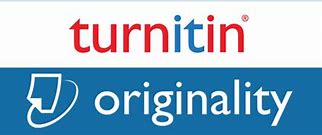ANALISIS PENDAPATAN DAN NILAI TAMBAH PENGOLAHAN WINE SALAK DI DESA SIBETAN, KARANGASEM, BALI
DOI:
https://doi.org/10.47313/jib.v41i71.961Keywords:
Salak, Wine, Analysis, IncomeAbstract
The emergence of the idea of processing wine from salak fruit is due to complaining about the salak farmers during the harvest season. In accordance with the law of demand that when the supply of goods is large while the demand is low or constant, the price of the goods will be low. Moreover, horticultural commodities whose characteristics are easily damaged, so it must be handled after harvest. In the case of salak Bali, the reality is that there are abundant harvests but the selling price is very low. The lowest price during the main harvest can reach IDR 500 per kilo gram. Seeing this problem, the Regional Government of Karangasem Regency has attempted a new breakthrough to help salak farmers by forming wine groups. This research was conducted in Sibetan Village, Karangasem, Bali, which is a village that produces salak Bali and is also a tourist village for Balinese salak. The method used in this research is descriptive method, namely a method that focuses on solving problems that exist at this time, then the data collected is compiled, explained and then analyzed. Data Analysis The data analysis used in this research is qualitative and quantitative analysis. Qualitative analysis is used to get an overview of the conditions of the salak wine processing business. Quantitative analysis is used to see the business analysis and some of the calculations carried out in this study. Quantitative analysis in the form of analysis of costs, revenues, profits, profitability, analysis of business efficiency and added value. The salak wine business is economically profitable and feasible to run. This can be seen from the results of the analysis obtained where the total revenue is IDR 146,630,000 and a total cost of IDR 71,486,000, so you get an income of IDR 75,144,000 with a total production of 1,333 bottle, the profit for each bottle of wine produced is IDR 56,372.References
Anarsis, Wiji. 1999. Agribisnis Komoditas Salak. Penerbit PT. Aksara, Jakarta. Dasrifah, E. Haris, B: Meilan, J. 2010 Analisis Perilaku Konsumen Dalam Pembelian Produk Sayuran Di Pasar Modern Kota Bekasi. Jurnal Agribisnis dan Pengembangan Wilayah Vol. 1 No. 2 Juli 2010.
Firdaus, Muhammad. 2008. Manajemen Agribisnis. Penerbit Bumi Aksara, Jakarta.
http://desa Sibetan: wordpress.com/tag/salak-Bali. Salak Bali- Salak Sibetan. 18 Februari 2015 https://ceputelecenter.wordpress.com/2009/09/12. Pengolahan Hasil Pertanian (2) Pengantar Pengolahan Hasil. Jurnal Hasil Riset. 2013. Jenis-jenis Rasio Profitabilitas W. www.ejurnal.com
Saragih, B. 2001. Paradigma Baru Pembangunan Ekonomi Berbasis Pertanian. Penerbit PT. Surveyor. Indonesia.
Sudiyono A. 2004. Pemasaran Pertanian. UMM Press. Malang.
Surakhmad. W. 2004. Petode Ilmiah Penelitian, Metode dan Teknik Penelitian. Penerbit Tarsito, Bandung.
Tribun-Bali. 2015. Wine Salak Asal Karangasem Rambah Nusantara. TribunBali.com, Denpasar. Jumat, 30 Januari 2015.
Widaningsih, N; M. Ilni Hidayat, M. Musair. 2013. Analisis Pendapatan Usatani Salak Bali di Desa Batu Nindan Kecamatan Basarang. Jurnal Zira”ah vol. 38 No. 3 Oktober 2013.
www.matarama.co.id. Mencicipi Wine Salak dari Bumi Bali.








